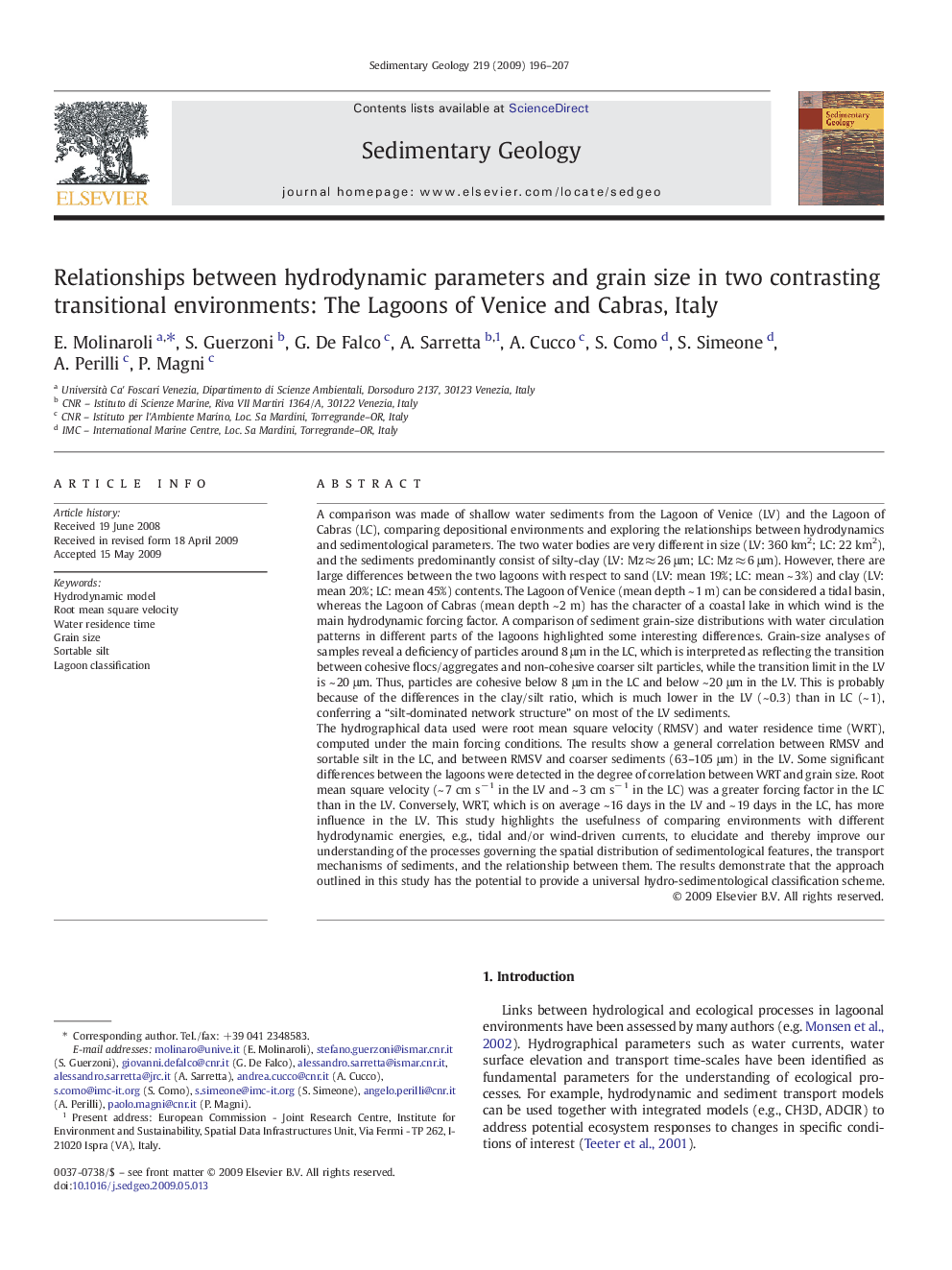| کد مقاله | کد نشریه | سال انتشار | مقاله انگلیسی | نسخه تمام متن |
|---|---|---|---|---|
| 4690400 | 1636137 | 2009 | 12 صفحه PDF | دانلود رایگان |

A comparison was made of shallow water sediments from the Lagoon of Venice (LV) and the Lagoon of Cabras (LC), comparing depositional environments and exploring the relationships between hydrodynamics and sedimentological parameters. The two water bodies are very different in size (LV: 360 km2; LC: 22 km2), and the sediments predominantly consist of silty-clay (LV: Mz ≈ 26 μm; LC: Mz ≈ 6 μm). However, there are large differences between the two lagoons with respect to sand (LV: mean 19%; LC: mean ~ 3%) and clay (LV: mean 20%; LC: mean 45%) contents. The Lagoon of Venice (mean depth ~ 1 m) can be considered a tidal basin, whereas the Lagoon of Cabras (mean depth ~ 2 m) has the character of a coastal lake in which wind is the main hydrodynamic forcing factor. A comparison of sediment grain-size distributions with water circulation patterns in different parts of the lagoons highlighted some interesting differences. Grain-size analyses of samples reveal a deficiency of particles around 8 μm in the LC, which is interpreted as reflecting the transition between cohesive flocs/aggregates and non-cohesive coarser silt particles, while the transition limit in the LV is ~ 20 μm. Thus, particles are cohesive below 8 μm in the LC and below ~ 20 μm in the LV. This is probably because of the differences in the clay/silt ratio, which is much lower in the LV (~ 0.3) than in LC (~ 1), conferring a “silt-dominated network structure” on most of the LV sediments.The hydrographical data used were root mean square velocity (RMSV) and water residence time (WRT), computed under the main forcing conditions. The results show a general correlation between RMSV and sortable silt in the LC, and between RMSV and coarser sediments (63–105 μm) in the LV. Some significant differences between the lagoons were detected in the degree of correlation between WRT and grain size. Root mean square velocity (~ 7 cm s− 1 in the LV and ~ 3 cm s− 1 in the LC) was a greater forcing factor in the LC than in the LV. Conversely, WRT, which is on average ~ 16 days in the LV and ~ 19 days in the LC, has more influence in the LV. This study highlights the usefulness of comparing environments with different hydrodynamic energies, e.g., tidal and/or wind-driven currents, to elucidate and thereby improve our understanding of the processes governing the spatial distribution of sedimentological features, the transport mechanisms of sediments, and the relationship between them. The results demonstrate that the approach outlined in this study has the potential to provide a universal hydro-sedimentological classification scheme.
Journal: Sedimentary Geology - Volume 219, Issues 1–4, 15 July 2009, Pages 196–207